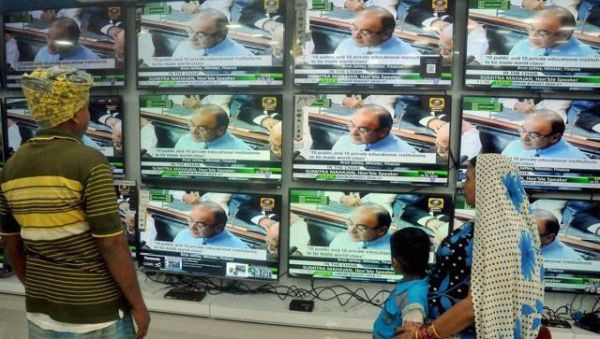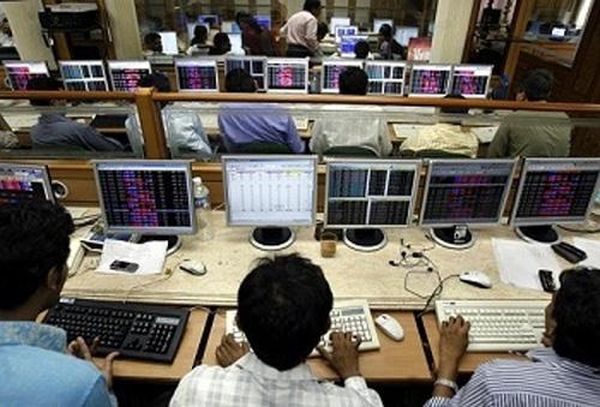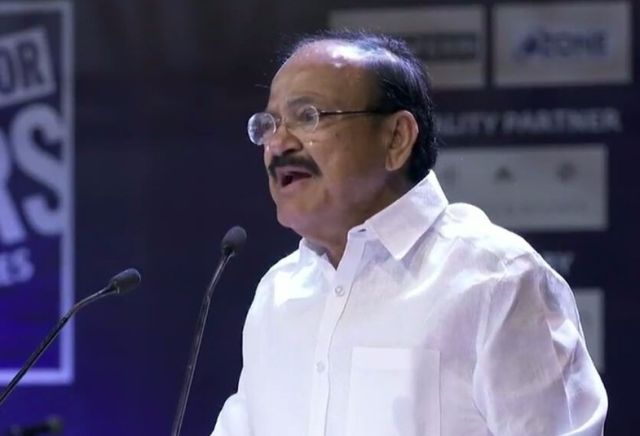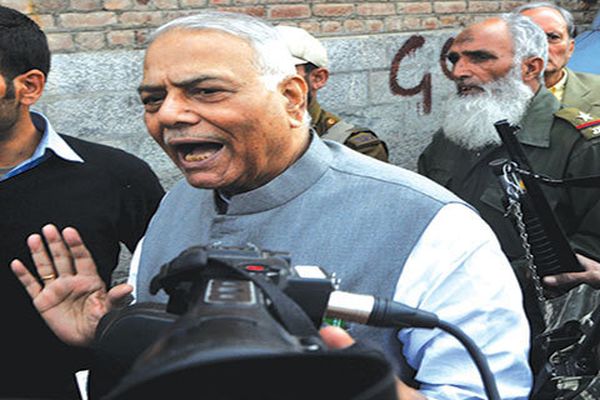
by admin | May 25, 2021 | Economy, Investing, News, Politics

Arun Jaitley
New York : The use of discretion by ministers in investment needed to be withdrawn and left to market mechanisms, while the world can expect a bigger and cleaner Indian economy in the coming years, Finance Minister Arun Jaitley said on Tuesday.
Addressing a gathering here at Columbia University, he said that when the NDA government came to power in 2014, global investors had lost confidence in India due to rising corruption and scandals.A
Moreover, foreign direct investment (FDI) faced hurdles as the “doors were too narrow”, the approval mechanism was slow and tax legislations unclear, he said.
“It was quite challenging to convince investors all over the world,” he added.
The rise of corruption was mainly because of the “extraordinary discretion” vested with the government.
Earlier, he said here that the Indian government has been able to change domestic public opinion in favour of inviting foreign investment into sectors of production that were earlier considered out of bounds both for ideological as well as security reasons.
“We have been able to invest FDI in almost every sector of the economy,” Jaitley said on Monday night at an investors roundtable jointly organised by the Confederation of Indian Industry and the US-India Business Council.
“Areas that were earlier considered sacrosanct, like defence manufacturing, we have been able to convince public opinion that it is better to invite foreign expertise to set up manufacturing in India,” he said.
“Suddenly we find a lot of joint ventures coming up (with foreign firms) for defence investment.”
Jaitley is on a week-long official visit to the US during which he will attend the annual meetings of the World Bank and the International Monetary Fund to be held in Washington.
—IANS

by admin | May 25, 2021 | Employment, Opinions
 By Amit Kapoor,
By Amit Kapoor,
Since the latest growth numbers have come in showing a consistent deceleration in Indias real gross domestic product (GDP) over six consecutive quarters, a cacophony of concerned voices have been heard. The din of criticism both from within and outside the government has grown so loud that Prime Minister Narendra Modi himself has had to intervene in order to defend his economic record. This warrants the question whether the situation is as grave as it is being made out to be. The simple answer is that, in some respects, there is not much that is out of the ordinary about the economic scenario, while in others the trends are cause for concern.
First and foremost are the growth figures. It is not rare for GDP growth to fall for such a long period. In fact, as recently as 2011-12, the GDP had decelerated for exactly six quarters between Q1 of 2011 and Q2 of 2012. By the end of that phase, the growth rate had fallen to a lowly 4.1 per cent. However, in the very next quarter it had bounced back to 6.1 per cent. This is not to make a simplistic argument for complacency, but to point out that growth in developing countries tends to be highly volatile and the Indian economy has shown strong resilience to such downturns. Therefore, a sense of panic is unwarranted and premature.
The second general concern with the economy is slightly more problematic. However, as we will show, it, too, is not out of the ordinary. The level of investment in the economy has become a major cause for concern. As we have pointed out in this column earlier, the level of private and household investment has hit rock bottom and only public investment has been pushing the economy forward. However, World Bank data shows that India’s gross fixed capital formation (GFCF), the leading indicator for investment, has been consistently falling over the last decade. In 2007, India’s GFCF had reached an all-time high of 36 per cent of GDP, close to China’s 39 per cent. Since then, India’s GFCF has fallen to 27 per cent while it has risen to 43 per cent for China. This points to the fact that investment sentiment never recovered in India after the 2008 crisis.
Again, a long-term negative trend is no reason for complacency. According to the RBI’s Annual Report, the non-food credit take-off across the country has been at its lowest in almost 25 years. Low credit take-off indicates that industrialists are unsure of future prospects and have postponed investments owing to weak demand. The twin balance sheet problem that is the leading cause behind the muted investment sentiment needs to be urgently resolved. Fortunately, the government has been proactive on this front and is taken some positive steps to resolve bad debts of big accounts.
Apart from the fact that growth and investment have historically shown poor trends and that we are not in a unique situation, the fundamentals of the economy are significantly stronger than usual. The government has done a good job of sticking to its fiscal deficit targets while the RBI has done the same with inflation. Moreover, the country’s foreign exchange reserves have crossed $400 billion — huge by any standard. To put things in perspective, these reserves equalled 78 percent of India’s total external debt (both short and long term) at the end of March. It may be debatable whether the country needs such a huge trove of reserves, but they are considerable enough to ensure short-run and medium-term stability of the economy.
The most concerning factor of the economy, which also has had a similar long-term history, is unemployment. Lack of jobs is an aspect of the Indian economy that simply can no longer be ignored. Since India missed its own industrial boom and directly ended up becoming a service-led economy, jobless growth has been a problem for long. This is because services are not as labour-intensive as manufacturing. However, the situation has worsened more recently. Between March 2014 and 2016 India experienced an absolute decline in employment, probably for the first time since independence, as pointed out by the Economic and Political Weekly. A fall in the absolute number of jobs for a developing country like India, where 10 million people are expected to join the workforce annually, is disastrous, to put it mildly.
All in all, the falling growth rate will reverse its trend soon as history proves. This will happen over the next few quarters as the after-effects of the twin shocks of demonetisation and GST subside. Investment will hopefully see a revival once the banks find their balance sheets improving. But the problem of job growth will pose the real challenge to the Modi government.
The recent frenzy around the deceleration of GDP growth does not do justice to this structural problem with the economy. Growth rates are understandably volatile and the fall in this period has been accentuated by demonetisation and the implementation of GST. The economy is resilient enough to extricate itself out of these shocks and, in fact, the latter will only be beneficial in the long run. The real problem lies with job creation and it was not a problem created yesterday. The problem of jobs is deep-rooted within the economy and will require equally deep-rooted reforms. The specifics of those reforms are a discussion for another day — but we need to begin by shifting our focus to the appropriate concerns.
(Amit Kapoor is chair, Institute for Competitiveness, India. The views expressed are personal. He can be contacted at amit.kapoor@competitiveness.in and tweets @kautiliya. Chirag Yadav, researcher, Institute for Competitiveness, India has contributed to the article.)
—IANS

by admin | May 25, 2021 | Economy, Markets, News
 By Rohit Vaid,
By Rohit Vaid,
Mumbai : The upcoming quarterly results season, along with key macro-economic data points, are expected to determine the trajectory of equity indices next week.
Market observers opined that global cues, combined with the direction of foreign funds, will also impact investors’ risk-taking appetite.
“Markets would look to the upcoming earnings season, though the expectations remain muted on weaker growth on the back of GST implementation. The divergence of weak Indian macros and buoyant global growth, combined with higher Indian market valuations, will keep the positive momentum in Indian markets capped,” Zyfin Advisors’ Chief Executive Devendra Nevgi told IANS.
“Fiscal overruns and inflation stickiness and the lack of other adequate levers to pump growth will result in markets relying on domestic liquidity for help,” Nevgi added.
IT major Tata Consultancy Services (TCS) is expected to be the first blue chip to come out with its second quarter (Q2) results on October 12.
“Domestic market is concerned with the lack of earnings growth — led by GST disruption and reduction in liquidity by global central banks… However, in the near term, Q2 earnings will be the key factor which will determine the direction of the market,” elaborated Vinod Nair, Head of Research at Geojit Financial Services.
Apart from the Q2 results, investors will also look out for the upcoming macro-economic data points such as the IIP (Index of Industrial Production) figures.
The Central Statistics Office (CSO) is slated to release the macro-economic data points of IIP and CPI (Consumer Price Index) on October 12, Thursday.
Besides the macro-economic data points, rupee’s movement against the US dollar and an outflow of foreign funds could make investors nervous.
The Indian rupee weakened by nine paise on last Friday to close at 65.38 to a US dollar from its previous week’s close at 65.29.
In addition to Indian currency, provisional figures from the stock exchanges showed that foreign institutional investors (FIIs) off-loaded stocks worth Rs 3,022.07 crore.
Figures from the National Securities Depository (NSDL) revealed that foreign portfolio investors (FPIs) divested equities worth Rs 550.75 crore during October 3-6.
“FPIs have sold over $2 billion in Indian equities over the past couple of months as they grow cautious due to economic growth slowing down and expensive stock prices. A constant outflow of foreign investment from domestic equity markets have weighed on rupee,” Anindya Banerjee, Deputy Vice President for Currency and Interest Rates with Kotak Securities, told IANS.
“As a result, we can see USD-INR rise towards 66/66.20 levels in the coming days from 65.35 now. However, we do not expect USD-INR to sustain above 66.20 levels for long, as RBI is expected to remain a seller at higher levels to contain volatility.”
On technical charts, Nifty can move towards record highs after crossing the 9,980-10,000 points hurdle.
“Nifty’s sharp bounce back on Friday has opened up possibility of a further up-move in the early part of next week,” said Deepak Jasani, Head of Retail Research for HDFC Securities.
“A decisive move above the hurdle of 9,980-10,000 points level could lead Nifty to move towards the recent all-time high of around 10,178 points level in the next 1-2 weeks. On down moves, it could take support at 9,830 points.”
Last week, the key Indian equity indices — the BSE Sensex and the NSE Nifty — rose on the back of global cues, along with healthy macro and auto sales data.
Consequently, the 30-scrip Sensitive Index (Sensex) of the BSE surged by 530.5 points, or 1.7 per cent to 31,814.22 points.
Similarly, the Nifty50 of the National Stock Exchange (NSE) edged higher by 191.1 points, or 1.95 per cent to close the week’s trade at 9,979.70 points.
(Rohit Vaid can be contacted at rohit.v@ians.in)
—IANS

by admin | May 25, 2021 | Economy, News, Politics

Venkaiah Naidu
New Delhi : Vice President M. Venkaiah Naidu said on Friday that the ongoing discussion on management of economy was good for democracy and noted that there will be some initial hiccups in the process of any transformation.
Naidu, who inaugurated the International Conference on Technological Advancements in Railway and Metro Projects 2017, said that steps towards economic transformation will have many beneficial effects in the future.
“The discussion which is going on our economy is always good for our democracy. But at the same time, we need to understand the experience. If some transformation or any reformation is going on, there will be some initial hiccups.
“But at the end of the day, it will help. A revolutionary reformation is taking place in the country. In future there will be a very happy situation with such a massive transformation taking place,” he said.
He also said that urbanisation was taking place at a rapid pace in the country and the need for efficient and cost-effective transport was critical.
The Vice President said that new concepts such as “Transit Oriented Development” should be promoted which will improve the lives of people living around the metro stations in a big way.
Noting that the Indian Railways is estimated to be the third largest railway system in the world in the next five years accounting for 10 per cent of the global market, Naidu called upon it to plan expansion very meticulously taking into account innovative practices available across the globe.
Naidu expressed happiness that inventor of Maglev, also called magnetic levitation train, was at the event, saying the technology will help improve safety and security and enhance the quality of travel.
—IANS

by admin | May 25, 2021 | Economy, News, Politics

Yashwant Sinha
New Delhi : In a riposte to Prime Minister Narendra Modi, senior BJP leader Yashwant Sinha on Thursday said he won’t watch silently when the Indian economy was facing “cheerharan” — like Bhishma when Draupadi was disrobed in the Mahabharata.
Replying to Modi’s speech on Wednesday in which he compared his critics to Shalya, the demoralising character in the Mahabharata, Sinha said he was not sure who was being likened to him.
“I only want to say, if we are talking in terms of Mahabharata, I cannot watch in silence like Bhishmapitamah when Draupadi was subjected to ‘cheerharan’ (disrobed). I won’t let the same happen (with economy),” the former Finance Minister told Aaj Tak TV.
Modi in his address to the Institute of Company Secretaries of India on Wednesday said his critics were suffering from “shalya vrutti” who “sleep well only after they spread a feeling of pessimism all around”.
Sinha said Modi “doesn’t listen” but “only speaks”.
“When the Prime Minister speaks, nobody can question. He makes his speech, then there are cheers and it ends there.”
He said he wanted to ask what the BJP would say about the promises Modi made before coming to power when the 2019 Lok Sabha election takes place.
“Nobody is going to ask us how our performance was as compared to UPA. The UPA is history. They will ask us about the promises we made. Have we fulfilled them?”
In another TV interview, Sinha said it was not important to know who was pessimist or optimist.
“Failure or success is not important. What is important is the issues being raised by me and by others must be tackled. The basic purpose of my raising these issues was to bring them to the notice of the government and encourage the government to be able to find a solution to the problems confronting the economy now,” he said.
He said personal attacks won’t work for the Prime Minister. He said nobody was judging the economy on the basis of one quarter.
“We are aware of the fact that it has been declining quarter after quarter… It has been 5 to 6 quarters now.. not just one.”
Sinha said the GDP growth was 5.7 per cent in the last quater of the last financial year and he didn’t speak up.
“When the same continued, the impression was that the slowdown is here to stay and we will take every effective steps in order to ensure that we get out of this slowdown.
“The purpose was to apprise the government of the situation that they were not aware, to sensitise them so that they move forward. The government goes to town, beating its drums at the slightest indication of progress. You can’t have one yardstick for yourself and another for the other.”
—IANS





